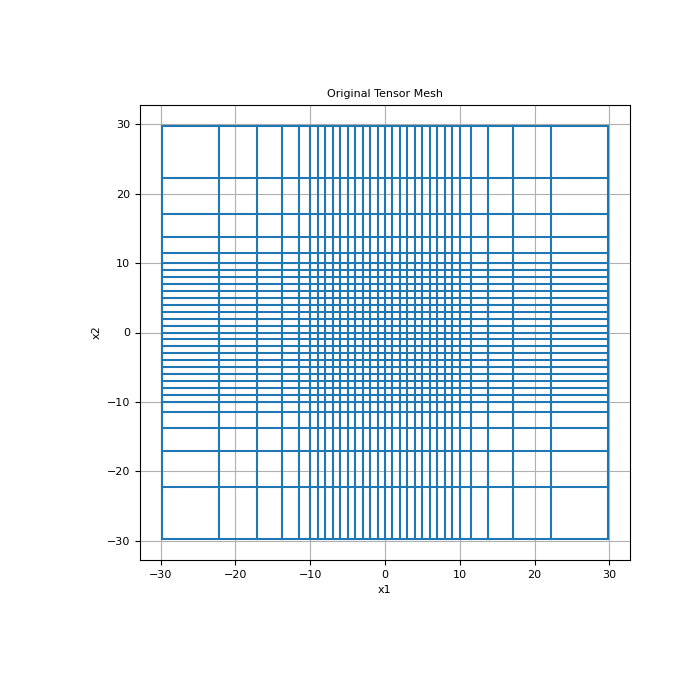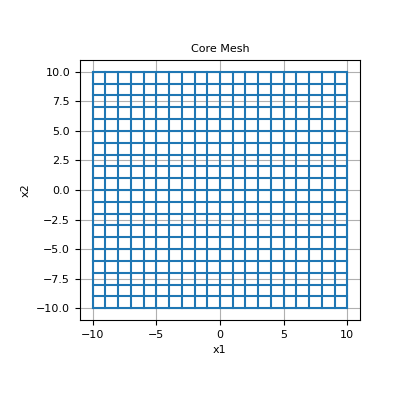discretize.utils.extract_core_mesh#
- discretize.utils.extract_core_mesh(xyzlim, mesh, mesh_type='tensor')[source]#
Extract the core mesh from a global mesh.
- Parameters:
- xyzlim(
dim, 2)numpy.ndarray 2D array defining the x, y and z cutoffs for the core mesh region. Each row contains the minimum and maximum limit for the x, y and z axis, respectively.
- mesh
discretize.TensorMesh The mesh
- mesh_type
str,optional Unused currently
- xyzlim(
- Returns:
- tuple: (active_index, core_mesh)
active_index is a boolean array that maps from the global the mesh to core mesh. core_mesh is a discretize.base.BaseMesh object representing the core mesh.
Examples
Here, we define a 2D tensor mesh that has both a core region and padding. We use the function extract_core_mesh to return a mesh which contains only the core region.
>>> from discretize.utils import extract_core_mesh >>> from discretize import TensorMesh >>> import numpy as np >>> import matplotlib.pyplot as plt >>> import matplotlib as mpl >>> mpl.rcParams.update({"font.size": 14})
Form a mesh of a uniform cube
>>> h = [(1., 5, -1.5), (1., 20), (1., 5, 1.5)] >>> mesh = TensorMesh([h, h], origin='CC')
Plot original mesh
>>> fig = plt.figure(figsize=(7, 7)) >>> ax = fig.add_subplot(111) >>> mesh.plot_grid(ax=ax) >>> ax.set_title('Original Tensor Mesh') >>> plt.show()
(
Source code,png,pdf)
Set the limits for the cutoff of the core mesh (dim, 2)
>>> xlim = np.c_[-10., 10] >>> ylim = np.c_[-10., 10] >>> core_limits = np.r_[xlim, ylim]
Extract indices of core mesh cells and the core mesh, then plot
>>> core_ind, core_mesh = extract_core_mesh(core_limits, mesh) >>> fig = plt.figure(figsize=(4, 4)) >>> ax = fig.add_subplot(111) >>> core_mesh.plot_grid(ax=ax) >>> ax.set_title('Core Mesh') >>> plt.show()

